AI-Powered Feedback and Grading in Higher Education

The way we assess student learning and provide feedback is evolving. As classrooms grow more diverse and learning happens both online and in person, traditional assessment approaches are no longer suitable. At the same time, emerging technologies like artificial intelligence (AI) are opening the door to exciting new possibilities.
Imagine being able to provide every student with timely, personalized feedback without tripling your workload and or spotting learning challenges early, before they impact outcomes. AI makes this possible. With AI, educators are finding new ways to enhance teaching and focus more on what matters most: students’ learning experience.
This transformation comes with questions. How do we ensure AI is used ethically and responsibly? And how can institutions provide the support faculty need?
This guide will help you and your institution explore these questions and more.
Chapter 1 sets the stage by looking at the requirements of modern assessment, as well as the challenges of delivering feedback and grading.
Chapter 2 explores the benefits of AI-assisted feedback and grading and how to utilize AI to deliver quality feedback and assessment.
Chapter 3 explores the future of AI feedback and grading, as well as how institutions can address the associated ethical concerns.
We aim to demystify AI and offer a roadmap you can trust, one grounded in pedagogy, supported by research, and shaped by the real needs of educators and students. The future of assessment isn’t about replacing humans with machines. It’s about using smart tools to enable faculty to better help students learn.
Chapter 1: Assessment and feedback in the age of AI
Assessment and feedback are key to the learning experiences. It is important that students receive quality feedback and grading that encourages them to achieve the learning outcomes. However, what does quality feedback and grading exactly mean?
Research investigating students’ perspectives on effective feedback found that learners value “timely, growth-oriented, interactive, specific, and personalized” feedback (Holt et al., 2024)
Such a need, along with digital transformation and the integration of generative AI technologies, has led institutions to transform how they define quality feedback and grading. Effective feedback and grading have to (Knight & Ferrell, 2022):
- Support the personalized needs of learners regardless of backgrounds, domains, and learning styles.
- Be scalable across different class sizes and modalities without requiring more human resources.
- Generate holistic, robust learning analytics that can inform better curriculum design
- Work smoothly within the LMSs
- Manage staff and learner workload effectively by having the right assessment, at the right time, supported by efficient business processes
- Foster active learning and engagement throughout the learning process, thus improving student outcomes
- Foster learner employability through authentic assessment tasks that nurture real-life skills
Ensuring these requirements is key to student success. However, it is no easy task to create and implement a quality feedback and grading process. Institutions and staff are presented with several obstacles when delivering effective assessments.
The challenges of modern feedback and grading
Reduced efficiency due to budget cuts: Institutions around the world are facing layoffs and budget cuts, resulting in faculty members taking on more responsibilities while receiving little or no support. With fewer instructors having to take on more students, it is much more difficult to provide individual attention to everyone, especially when it comes to feedback and grading (Er et al., 2021).
Time investment and administrative workload: The “Teacher Workload Research Report 2024” reveals that feedback and grading are the most time-intensive tasks in a teacher's work week outside of in-class instruction (Hulme et al., 2024). Instructors spend approximately 5 hours per week on feedback and grading alone, which amounts to 140 hours over a 28‑week school year, as remarked by educators in this article. Such a heavy time investment, along with the need to individualize the assessment, course-specific differences, reporting requirements, assignment volume, and related administrative work, make feedback and grading a more demanding task.
Inconsistent feedback quality: With growing class sizes and limited teacher time, it is extra difficult for instructors to deliver consistent quality of feedback to all students on every assignment. This results in some students receiving only partial comments, with uneven attention paid to each rubric criterion or little guidance for actionable improvement. Furthermore, the feedback and grading might lack deep alignment with course objectives, making it harder for students to apply context-based suggestions.
Lack of student engagement with the feedback process: Students are unmotivated to engage in learning since they neither understand how their learning will be measured nor see the value of receiving feedback and grading (Jin et al., 2022; Winstone, 2019).
Lack of tracking mechanism: There is a lack of mechanisms to track student engagement with feedback and the impact of feedback on students' learning (Jin et al., 2022; Winstone, 2019).
Subjectivity and bias in grading: Grading often involves subjective judgment, which can be influenced by factors like personal bias or the grader's interpretation of assessment criteria. This can lead to inconsistent grading and perceptions of unfairness among students (Malouff & Thorsteinsson, 2016).
Difficulty in standardizing: In large classes, different graders (e.g., teaching assistants) may have varying standards and grading practices, leading to inconsistencies in how student work is evaluated.
Misalignment with feedback goals: Grading can decrease students' ability to learn from feedback, as they tend to focus on the letter/numerical grade and not the accompanying feedback (Schinske & Tanner, 2017).
While feedback and grading can be time-consuming and challenging, investing in the right technology can help streamline the process and save institutions valuable time. Among the emerging technologies, AI stands out, presenting great potential to support faculties in elevating the feedback and grading process.
“It (AI) has the potential to improve speed, consistency, and detail in feedback for educators grading students’ assignments.” – Rohim Mohammed, Lecturer at University College Birmingham
.webp)
Download the study


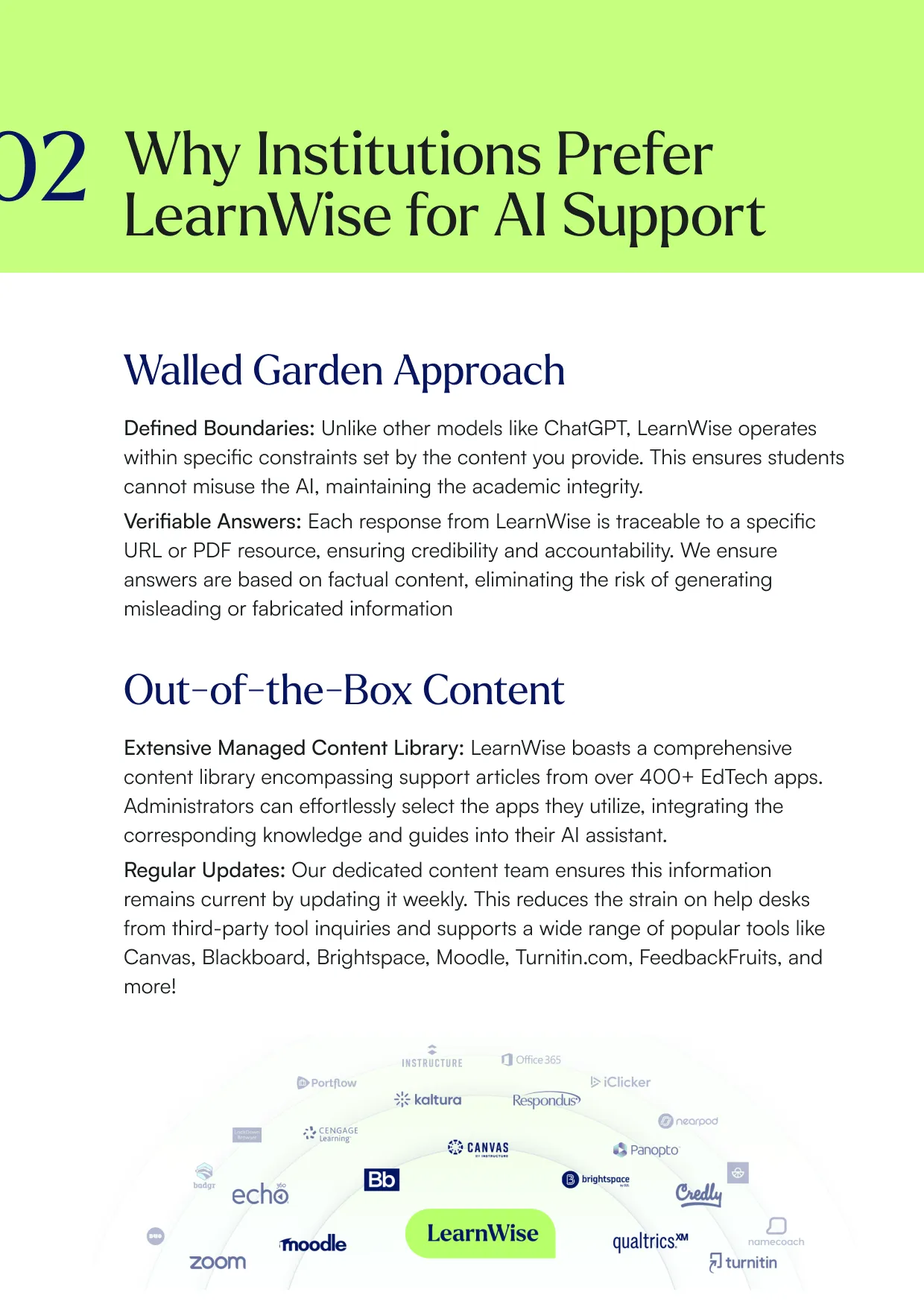
Download the whitepaper


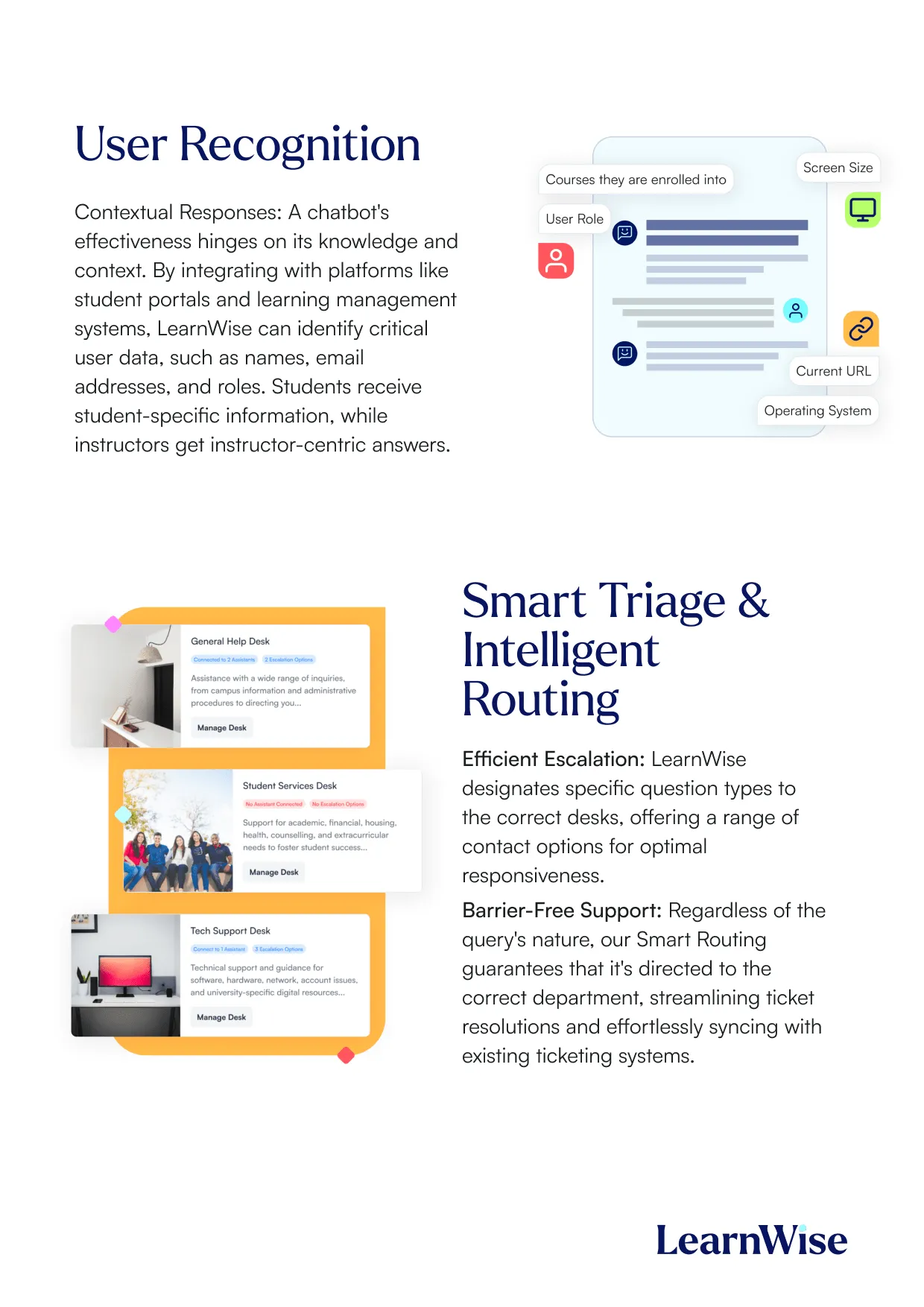

Chapter 2: AI-powered feedback and grading: A game changer
The advancement of Natural Language Processing (NLP) and machine learning has shown promising ability for feedback and grading provision (Rad et al., 2023).
AI can automate and personalize instructors’ feedback for students, further supporting student engagement (Kasneci et al., 2023) and leading to better student outcomes (Zhai, 2022). AI can also be used to analyze student performance and provide customized feedback promptly, thus saving institutions time and resources (Rahman & Watanobe, 2023). Combining NLP with machine learning can significantly improve AI’s ability to interpret textual responses, empowering more accurate assessment and grading of student work (Baidoo-Anu & Ansah, 2023).
Below, you can find a summary of the key benefits of AI-powered feedback and grading.
Providing consistent, personalized feedback:
An AI system can deliver feedback tailored to each student's specific learning needs. For instance, one student may benefit from guidance on grammar, while another might need support with more complex skills like constructing effective argument structures.
Reducing educators’ workload and saving time:
AI’s ability to process and generate timely, personalized feedback at scale in large student cohorts can help free up time for instructors to focus more on other educational activities such as lesson planning, supporting students, pedagogical research, and engage professional development, all of which are influential in enhancing students’ learning (Venter et al., 2024). AI grading systems also contribute to teacher workload reduction by increasing the marking speed by 80%.
Furthermore, AI feedback and grading platforms assist in detecting areas where students need additional support, allowing educators to make timely adjustments and interventions (Ghanaprakasam & Lourdusamy, 2024).
Improving learning outcomes:
AI-powered feedback could significantly improve the learning performance and engagement of students with a moderate motivation level (Huang et al., 2023). Receiving personalized guidance increases engagement among students, encouraging them to take ownership of their learning process and cultivate a growth mindset, eventually improving the learning outcomes (Kopp, 2023).
Fostering students’ employability:
AI-powered feedback prompts students to think critically about their work, analyze different perspectives, and refine their understanding. This process also encourages the development of metacognitive skills, fostering self-reflection and self-improvement (Winne, 2022). These skills are considered essential to help students navigate successfully in their future work.
Ensuring consistency and fairness:
According to Ellis (2022), using AI can help provide consistent feedback and grading to students, making it fairer than human grading practices, which tend to be impacted by personal factors, such as fatigue, time of day, and turnaround time expectations. AI feedback and grading systems give reviews and assign scores based on uniform criteria, ensuring that all students are graded in the same way. This promotes inclusiveness by giving grades to the students based on their performance (Balla, 2024).
Increasing efficiency and scalability:
AI-powered feedback and grading systems can assess written work with reasonable accuracy and provide formative feedback at scale, at the same time reducing grading bias and improving consistency by applying standardized criteria across large cohorts.
Effective resource allocation and cost saving are other benefits that AI feedback and grading systems can bring, as they minimize the need for outsourcing and extra human resources (Alqahtani et al., 2023). Such a large cost saving allows institutions to allocate the budget towards other educational aspects like student support, technological upgrades, and professional development (Gnanaprakasam & Lourdusamy, 2024).
AI feedback and grading in action
Many institutions and organizations have already integrated AI into their grading systems with success:
University of Michigan’s ECoach
Developed by the University of Michigan, ECoach is a personalized, web‐based coaching tool that helps students navigate the course by providing study advice, personalized feedback, and useful tools.
McMaster University’s Assessment Partner
A GenAI tool to help instructors create effective student assessments. Developed in collaboration with educational experts, this platform combines established learning theories, best assessment practices, and universal design principles to provide flexible, structured support tailored to the unique needs of various academic disciplines.
Streamlining student support with an AI assistant
Professors Joshua Gans and Kevin Bryan at the University of Toronto’s Rotman School of Management developed a simple AI assistant called All Day TA to provide instant feedback and support for students. Starting from a small pilot for a class of 300 students, the AI bot has now been adopted by nearly 100 institutions and business schools.
Utilizing AI to enhance feedback and grading
AI has shown endless potential in elevating feedback and grading in higher education. However, AI can only reach its full potential if it is utilized accurately. In this section, we will explore several ways in which AI can be integrated into teaching and learning to help institutions deliver quality feedback and grading.
Providing personalized, timely feedback
One of AI's biggest advantages is its ability to generate and deliver immediate feedback on different aspects such as language, subject matter, grammar, structure, and more. As students receive personalized feedback on their submissions, they can immediately identify their strengths and areas that need to improve. This helps students to take ownership of their learning and become more engaged throughout the learning process.
AI platforms like LearnWise AI Feedback & Grader offer feedback generation and enhancement features that are highly beneficial for reinforcing learning. By using advanced reasoning models, the tool allows instructors to provide constructive, quality feedback that is tailored to each assignment. The tool helps save time from lengthy grading process, allowing instructors to focus more on other aspects of teaching. Instructors can also use the tool as a “second eye” by refining and enriching feedback with AI, so the students can receive the most actionable and accurate feedback.
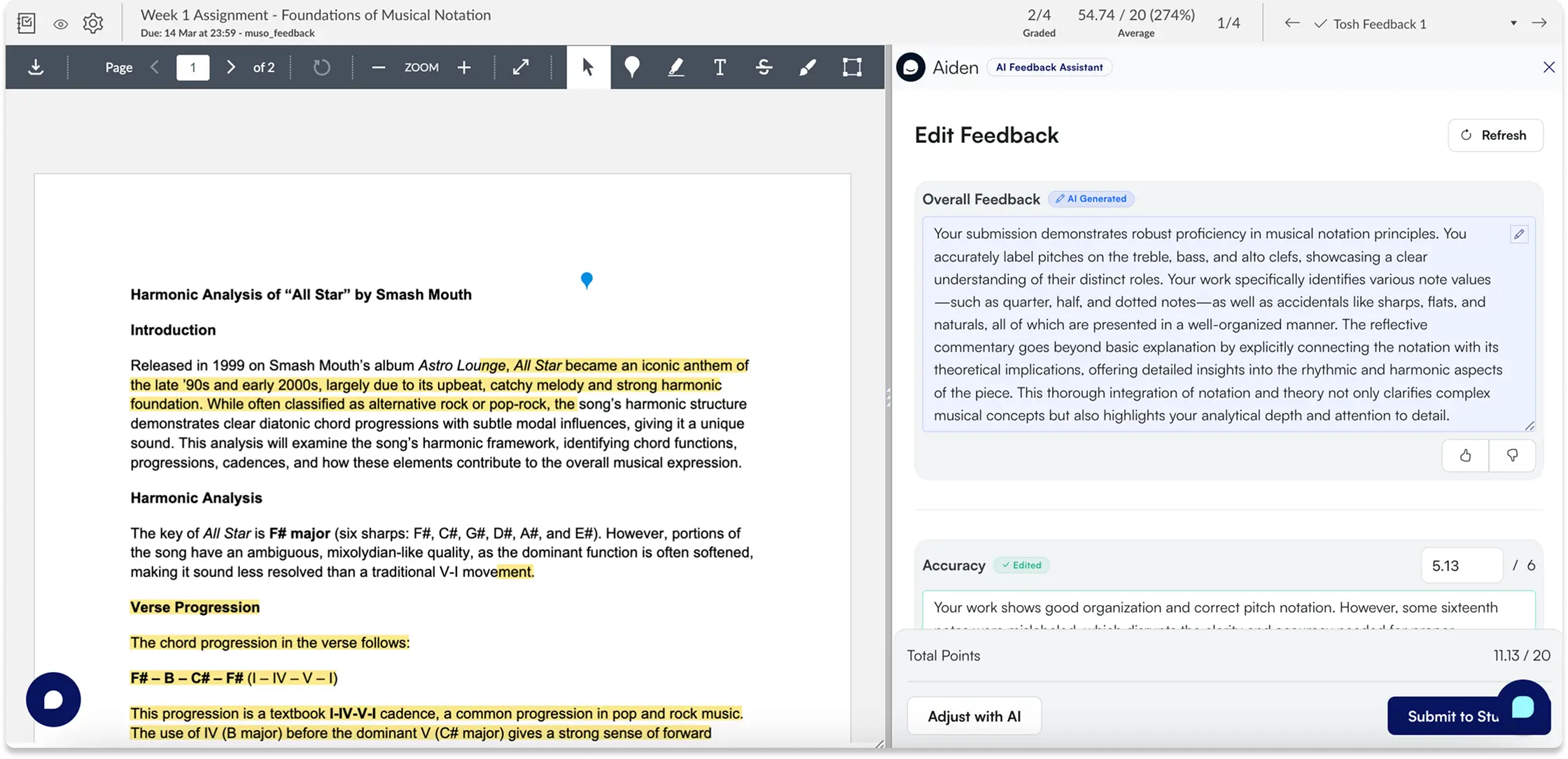
Creating assessment activities and rubrics
AI can help teachers craft personalized quizzes and tests that address each student's learning needs and align closely with the learning goals. These dynamic assessments can challenge students appropriately and identify areas where they need further development. AI for Education developed and shared a prompt library to help educators utilize GenAI to develop assessment practices, rubrics, feedback activities, and more.
AI tools like LearnWise AI Student Tutor can generate quizzes, flashcards, lesson plans, exercises, and more based on the course content to help students reinforce their learning.
Designing effective feedback systems
Educators can build custom AI systems to provide feedback that aligns with a detailed rubric and learning objectives, and to offer students tailored advice that students can apply immediately to their next tasks. Unlike traditional feedback, which can vary based on time constraints or subjective interpretation, AI-powered feedback is designed to follow specific criteria with consistency. This ensures that every student receives input that directly reflects the intended learning outcomes and assessment standards.
LearnWise AI Feedback & Grader supports instructors in enhancing their feedback on student assignments and exams, based on different sources like rubrics, course content, assignment requirements, and instructors’ notes and annotations of student work. By aligning all these different sources, institutions ensure that grading and feedback stay consistent and fair for all students. Instructors can also adjust their feedback using custom instructions, like level of detail, length, tone of voice, and more. Most importantly, instructors are always in the driver's seat, maintaining full control of the feedback and grading process, with the option to review, approve, or fine-tune feedback before sharing with the students.
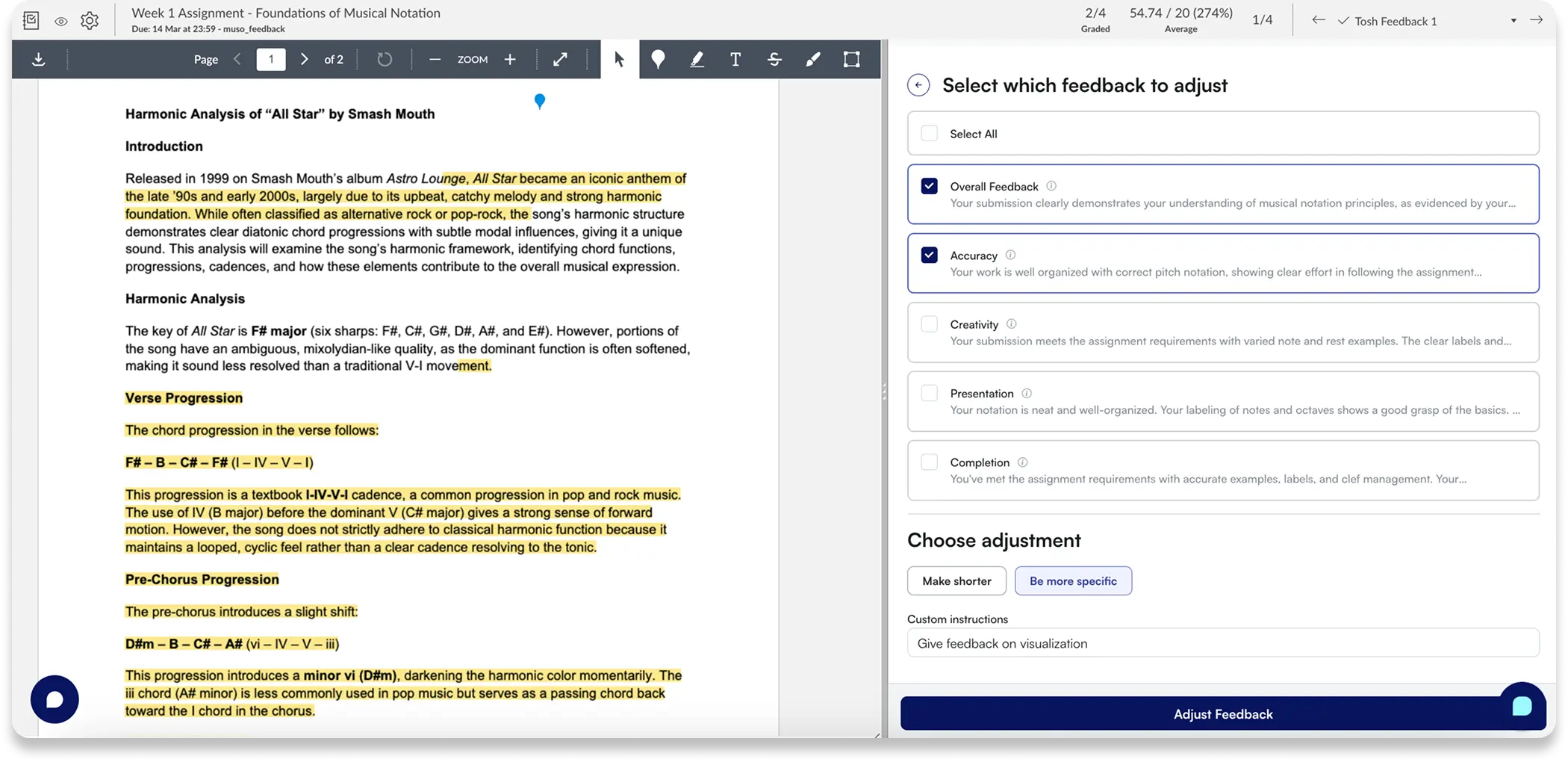
Providing data insights on student performance
AI tools can track student progress over time, offering educators a comprehensive view of each learner’s development. By analyzing performance patterns, these tools can identify trends and anticipate potential challenges, enabling timely and proactive support. Furthermore, AI feedback systems can analyze all the written feedback and generate an overview of the students’ work.
LearnWise AI Feedback & Grader presents a comprehensive insights dashboard on how faculty is interacting with the assistant. These insights cover faculty usage, submissions graded, human edits, session history, and more to help institutions make data-driven improvements on program and course designs.
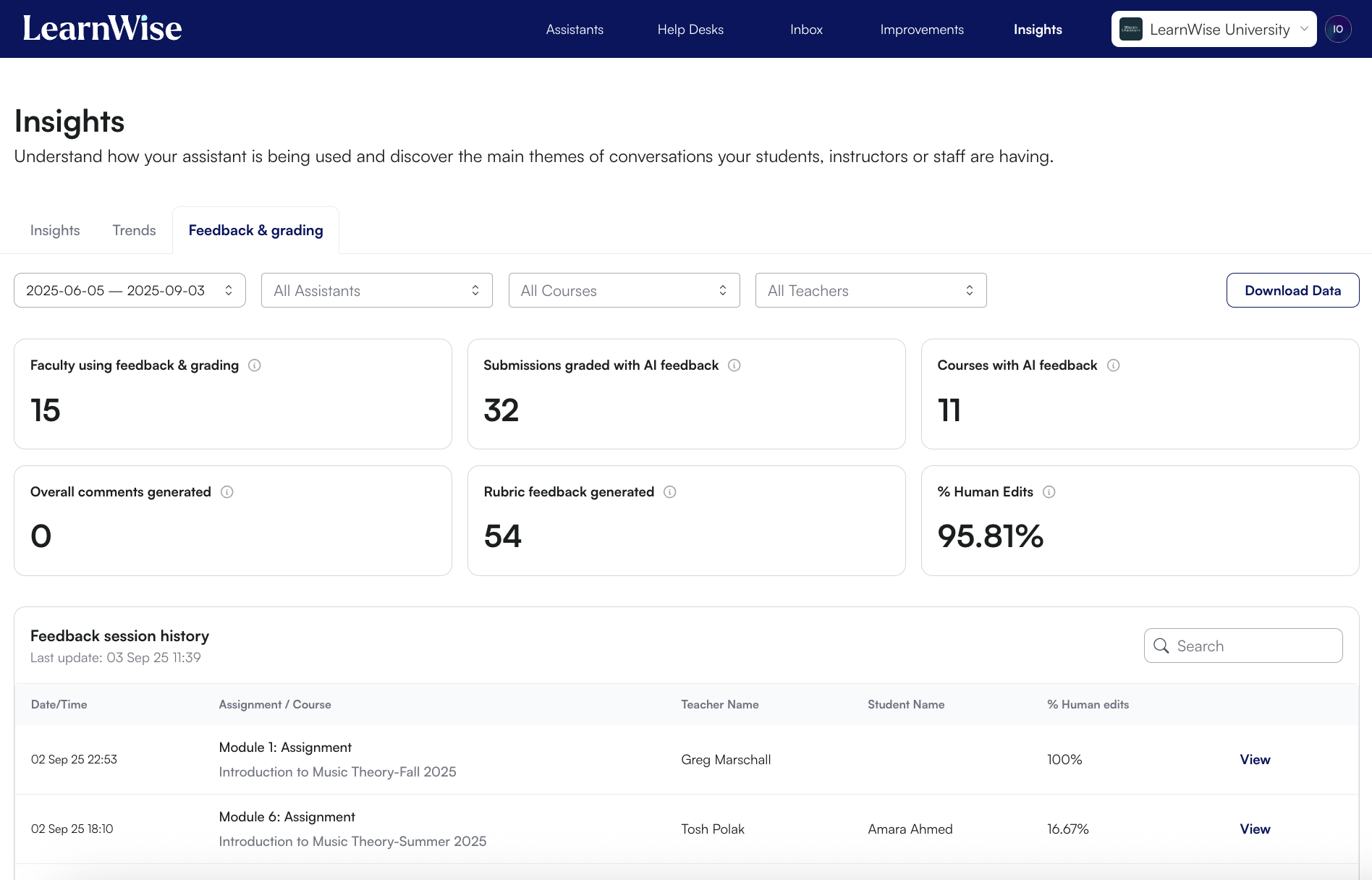
AI-powered feedback and grading in the LMS
AI feedback and grading systems are most effective when they are embedded directly into the learning management system (LMS) interface, allowing educators to access, customize, and implement feedback mechanisms without leaving their primary instructional platform. This reduces friction and improves adoption.
Key integration strategies:
- Single Sign-On (SSO) and API connectivity: Use LMS-compatible tools that offer secure integrations via SSO and open APIs. This allows AI tools to sync with student profiles, assignments, and course structures in real-time.
- Modular plug-ins: Tools like Turnitin, LearnWise AI, and Grammarly offer plug-ins or LTI (Learning Tools Interoperability) modules that can be added to LMS platforms like Brightspace, Canvas, or Moodle.
- Real-time data syncing: Enable real-time syncing of student submissions and feedback loops to ensure data accuracy, faster feedback cycles, and up-to-date performance dashboards.
Design principles for smooth AI-LMS integration:
- Low cognitive load for educators: Ensure that the AI features (e.g., rubric-aligned feedback, auto-comments, or analytics dashboards) are intuitive and reduce, not add to, teachers’ workload.
- Customizability: Allow educators to tailor AI-generated feedback and grading to align with course-specific learning outcomes and rubrics.
- Scalability: Integrations should support large cohorts and diverse assignment types (essays, quizzes, video assignments) with consistent performance.
- Privacy and compliance: Ensure the AI tools comply with FERPA, GDPR, and institutional data policies, with clear documentation on how student data is used and protected.
LearnWise AI Feedback & Grader is among the AI tools that are seamlessly integrated with different LMS grading interfaces like Brightspace Grader and Canvas SpeedGrader, allowing instructors to enhance feedback, assign grades, and publish these without having to step out of the LMSs. Rather than replacing, the tool helps enhance the assessment workflow already working in the LMSs.
Download the study



Download the whitepaper




Chapter 3: The future of AI-powered feedback and grading
The journey of integrating AI into the feedback and grading process involves challenges, including ethical concerns and the need for transparency. However, by addressing these challenges head-on and embracing the opportunities, educators can significantly enhance the teaching and learning experience.
Addressing inherent AI biases
The existence of biases in AI feedback and grading systems is among the major concerns for institutions when adopting the technology. AI tools can inherit biases from input data or their developers, and society. Such biases could reinforce existing discrimination towards specific groups, thus negatively influencing the delivered feedback and grades (Baker & Hawn, 2021). Mitigating these biases requires training the system with diverse input and data, conducting regular AI system audits, and getting teachers and students to review the AI systems.
Ensuring data privacy
Data privacy is another major concern when it comes to adopting AI in feedback and grading, especially considering the sensitivity of student data, which consists of not only academic records but also personal information.
Having clear guidelines about creating and using AI provides a roadmap for ethical and responsible use of AI that can avoid any potential risks, particularly those of inherent bias. The European Union's Artificial Intelligence Act (AI Act) is a great point of reference for institutions when creating AI guidelines. Institutions must also comply with established data privacy regulations, such as the GDPR, to ensure the protection of student information when implementing AI technologies in education.
Equally important is transparency, which underpins the ethical and inclusive use of AI. This involves developing clear policies that guide students on appropriate AI use and openly communicating the rationale and expectations. Transparency should further extend to how student data is collected and used, with institutions offering clear consent options and ensuring students are informed and empowered.
Looking forward, AI integration in the feedback and grading process is expected to deepen. Gnanaprakasam and Lourdusamy (2024) shared insights on the key developments of AI-powered feedback and automated grading, which are:
- Continuous improvements in NLP allow AI to process and evaluate more subjective and complex student work, like essays or open-ended questions. AI models are being developed to not only assess grammar and syntax but also look at more in-depth aspects like coherence and reasoning of student responses.
- AI's capacity for personalization will go beyond mere feedback to develop learning resources and pathways suitable for every student’s needs and goals.
- Seamless integration of AI grading with the LMSs promises to offer a more adaptive and responsive learning experience, making education more accessible to everyone.
The future of AI in supporting assessment, feedback, and grading holds great potential, as technologies become increasingly advanced and seamlessly embedded in teaching and learning. However, harnessing this potential requires thoughtful planning and responsible implementation to ensure AI tools are used effectively and ethically to support and enrich the learning experience.
“As a quickly evolving, consequential, and ubiquitous general-purpose technology, generative AI requires faculty to be the ‘humans-in-the-loop’ and to teach students how to be the same.” – 2025 EDUCAUSE Horizon Report, Teaching and Learning Edition
References
Alqahtani, T., Badreldin, H. A., Alrashed, M., Alshaya, A. I., Alghamdi, S. S., Saleh, K. b., Alowais, S. A., Alshaya, O. A., Rahman, I., Al Yami, M. S., & Albekairy, A. M. (2023). The emergent role of artificial intelligence, natural language processing, and large language models in higher education and research. Research in Social and Administrative Pharmacy, 19(8), 1236–1242. https://doi.org/10.1016/j.sapharm.2023.05.016
Balla, E. (2024, September 4). How AI is transforming grading? The AI Journal. https://aijourn.com/how-ai-is-transforming-grading/
Banihashem, S.K., Kerman, N.T., Noroozi, O., Moon, J. & Drachsler, H. (2024). Feedback sources in essay writing: peer-generated or AI-generated feedback? International Journal of Educational Technology in Higher Education, 21(23). https://doi.org/10.1186/s41239-024-00455-4
Baidoo‑Anu, D., & Ansah, L. O. (2023). Education in the Era of Generative Artificial Intelligence (AI): Understanding the Potential Benefits of ChatGPT in Promoting Teaching and Learning. Journal of AI, 7(1), 52–62. https://doi.org/10.61969/jai.1337500
Bellhäuser, H., Dignath, C., & Theobald, M. (2023). Daily automated feedback enhances self-regulated learning: A longitudinal randomized field experiment. Frontiers in Psychology, 14, 1125873. https://doi.org/10.3389/fpsyg.2023.1125873.
Celik, I., Dindar, M., Muukkonen, H., Järvelä, S. (2022). The promises and challenges of artificial intelligence for teachers: a systematic review of research. TechTrends ,66, 616–630 https://doi.org/10.1007/s11528-022-00715-y
Eaton S. (September 2024). Ethical reasons to avoid using AI apps for student assessment. https://drsaraheaton.com/2024/09/10/ethical-reasons-to-avoid-using-ai-apps-for-student-assessment/
Gnanaprakasam, J., & Lourdusamy, R. (2024). The Role of AI in Automating Grading: Enhancing Feedback and Efficiency. IntechOpen. doi: 10.5772/intechopen.
Gombert, S., Fink, A., Giorgashvili, T., Jivet, I., Di Mitri, D., Yau, J., & Drachsler, H. (2024). From the Automated Assessment of Student Essay Content to highly informative feedback: A case study. International Journal of Artificial Intelligence in Education, 1–39. https://doi.org/10.1007/s40593-023-00387-6.
Hattie, John. 2008. Visible Learning: A Synthesis of over 800 Meta-Analyses Relating to Achievement. Abingdon: Routledge.
Henderson, M., Ryan, T., & Phillips, M. (2019). The challenges of feedback in higher education. Assessment & Evaluation in Higher Education, 44(8), 1237–1252. https://doi.org/10.1080/02602938.2019.1599815
Holt, Deborah & Sun, Xiaomei & Davies, Beth. (2024). Assessment Feedback: What Do Students Want and Need?. Journal of University Teaching and Learning Practice. 21. 10.53761/tv2dfa83.
Huang, A. Y., Lu, O. H., & Yang, S. J. (2023). Effects of artificial intelligence-enabled personalized recommendations on learners’ learning engagement, motivation, and outcomes in a flipped classroom. Computers & Education, 194, 104684. https://doi.org/10.1016/j.compedu.2022.104684.
Hulme, Moira & Beauchamp, Gary & Wood, Jeffrey & Bignell, Carole. (2024). Teacher Workload Research Report 2024: Main Report.
Kasneci, E., et al. (2023). ChatGPT for good? On opportunities and challenges of large language models for education. Learning and Individual Differences, 103, 102274. https://doi.org/10.1016/j.lindif.2023.102274
Kopp, W., & Thomsen, B. S. (2023). How AI can accelerate students’ holistic development and make teaching more fulfilling. World Economic Forum. https://www.weforum.org/agenda/2023/05/ai-accelerate-students-holistic-development-teaching-fulfilling/
Knight, S., & Ferrell, G. (2022). Principles of good assessment and feedback. Jisc. https://www.jisc.ac.uk/guides/principles-of-good-assessment-and-feedback
Malouff, J. M., & Thorsteinsson, E. B. (2016). Bias in grading: A meta-analysis of experimental research findings. Australian Journal of Education, 60(3), 245-256. https://doi.org/10.1177/0004944116664618 (Original work published 2016)
Mollick, E. R., & Mollick, L. (2023). Assigning AI: Seven approaches for students, with prompts. https://doi.org/10.2139/ssrn.4475995
Nicol, D.& Macfarlane-Dick, D. (2006). Formative assessment and self-regulated learning: a model and seven principles of good feedback practice. Studies in Higher Education, 31, 199-218. 10.1080/03075070600572090.
O’Donovan, B. M., den Outer, B., Price, M., & Lloyd, A. (2019). What makes good feedback good? Studies in Higher Education, 46(2), 318–329. https://doi.org/10.1080/03075079.2019.1630812
Paris, B. (2022). Instructors’ Perspectives of Challenges and Barriers to Providing Effective Feedback. Teaching and Learning Inquiry, 10. https://doi.org/10.20343/teachlearninqu.10.3
Pierce, K. (2023). AI-powered personalized feedback – Save time & spark critical minds. In Artificial Intelligence in Education Conference Proceedings. eCampusOntario. https://ecampusontario.pressbooks.pub/artificialintelligenceineducationconference/chapter/ai-powered-personalized-feedback-save-time-spark-critical-minds/
Rahman, M. M., & Watanobe, Y. (2023). ChatGPT for Education and Research: Opportunities, Threats, and Strategies. Applied sciences, 13(9), 5783. https://doi.org/10.3390/app13095783
Robert, J., Muscanell, N., McCormack, M., Pelletier, K., Arnold, K., Arbino, N., Young, K., & Reeves, J. (2025). 2025 EDUCAUSE Horizon Report®: Teaching and Learning Edition. EDUCAUSE. https://library.educause.edu/resources/2025/5/2025-educause-horizon-report-teaching-and-learning-edition
Schinske, & Tanner, K. (2017). "Teaching more by grading less (or differently)." CBE Life Sciences Education, 13(2), 159–166.
Venter, J., Coetzee, S. A., & Schmulian, A. (2024). Exploring the use of artificial intelligence (AI) in the delivery of effective feedback. Assessment & Evaluation in Higher Education, 50(4), 516–536. https://doi.org/10.1080/02602938.2024.2415649
Zhai, X. (2022). ChatGPT User Experience: Implications for Education. SSRN Electronic Journal. https://doi.org/10.2139/ssrn.4312418


.png)

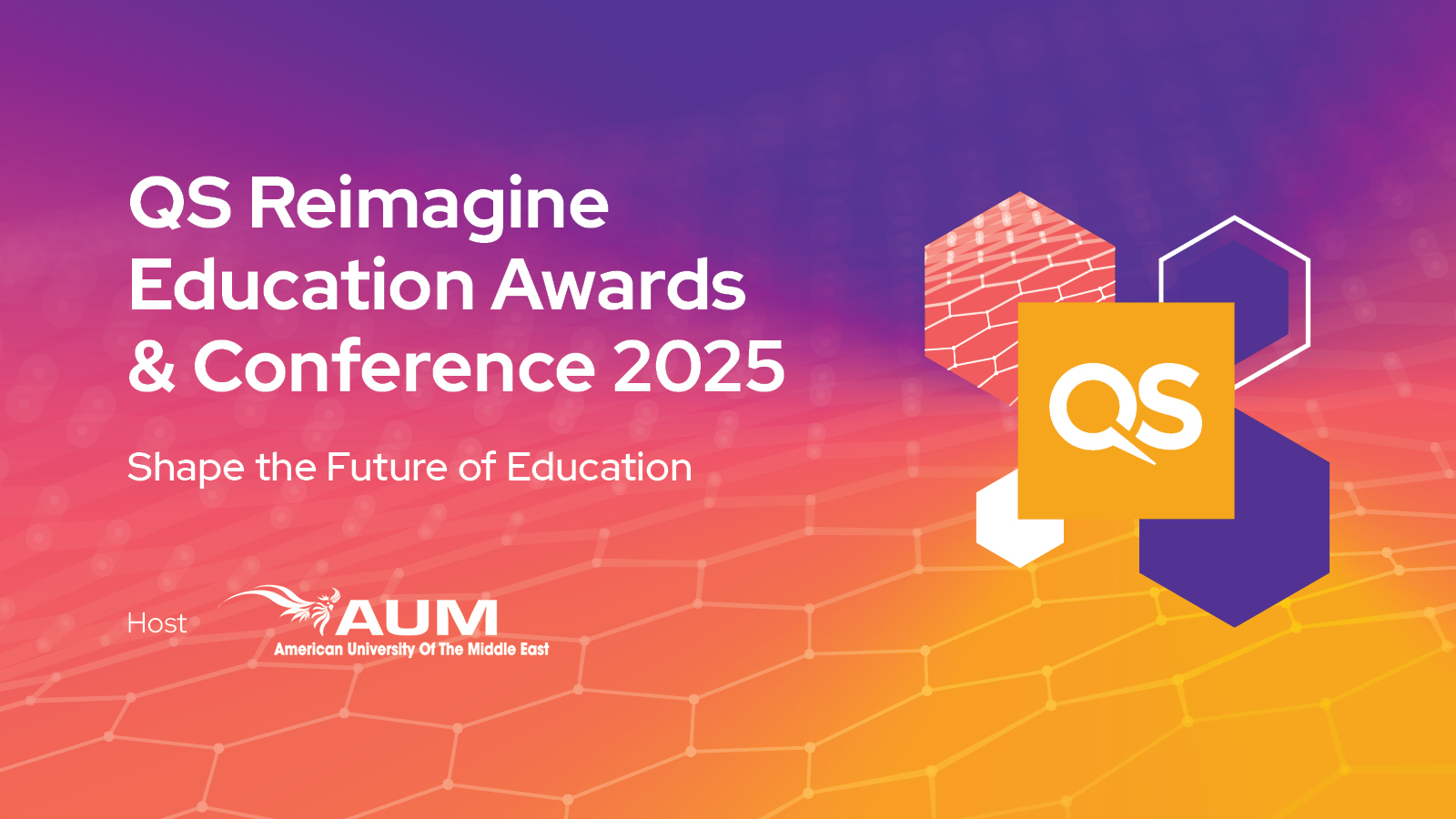
.png)
%20(1).png)
%20(1).png)
